Powdery Mildew: All-Natural Management
If there’s one disease that always seems to cause Northwest gardeners headaches, it’s powdery mildew. With all the humid weather this year, we’re seeing quite a bit of it. What’s a gardener to do? While there is no guaranteed cure for this ubiquitous disease, there are quite a few all-natural ways to help prevent and suppress it.
IDENTIFYING POWDERY MILDEW
Powdery mildew is a fungus parasite that attacks a wide variety of plants. It starts with a few small white spots on your plants’ leaves. If you look closely, you’ll see that they are made up of fine white filaments almost like a tiny spider web.
If the fungus gets the better of a plant, then the spots will multiply and the filaments will eventually spread until the whole leaf is covered in these fine white threads. In later stages, the leaves may turn yellow. Although powdery mildew is rarely fatal, it can stunt growth, inhibit flowering, and decrease crop yields. Besides, many gardeners just don’t like the looks of it.
Different species of powdery mildew attack different plant species. That’s good news because it means a single outbreak can’t spread, for example, from your cucumbers to your roses. However, you may have more than one species of the fungus in your garden, and the symptoms look the same regardless.
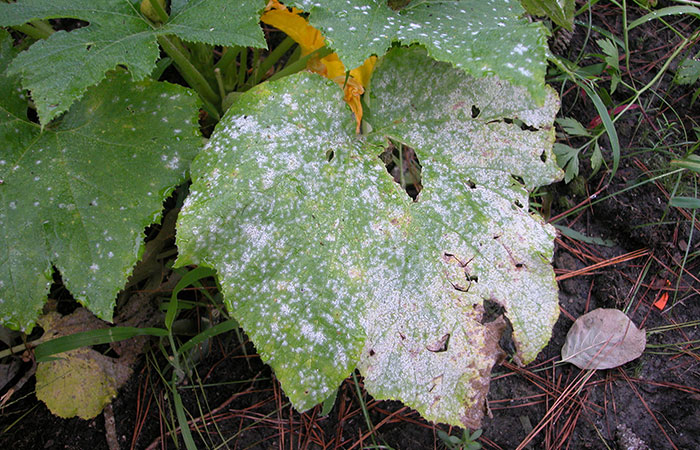
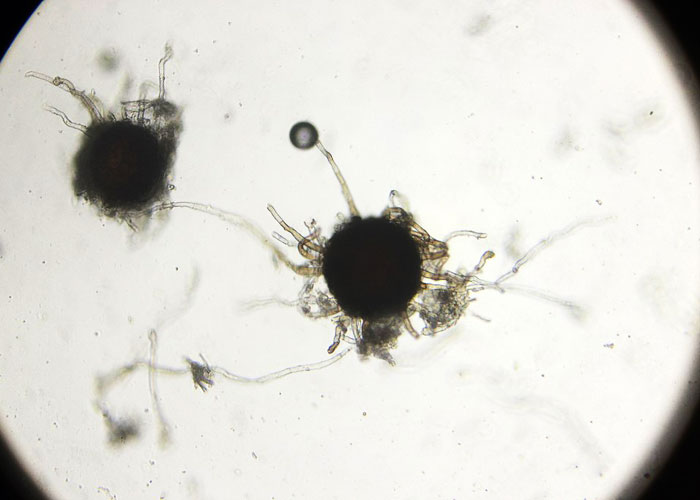
It doesn't take a microscope to spot powdery mildew!
TREATING OUTBREAKS NATURALLY
By this time of the year, most gardeners who are going to get powdery mildew probably already have it. It can affect any kind of plant, including vegetables, annuals, perennials, shrubs, and trees.
Although most treatments work better as preventative measures, there’s still hope of eradicating or at least slowing down the disease once you have it. The earlier you catch the outbreak, the better your chances of victory.
Horticultural oils are usually the most effective at eradication. This category includes neem oil, an all-natural plant extract that is allowed in organic gardening. Apply oils in overcast weather when temperatures are below 80°F, and always water your plants thoroughly before applying. If you previously used a sulfur-based fungicide, wait at least two weeks before applying any kind of horticultural oil.
The preventative fungicidal bacterium in Serenade, Bacillus subtilis, may also help slow down an established infection.
PREVENTING OUTBREAKS BEFORE THEY START
Once you have a handle on eradicating this year’s powdery mildew outbreaks, it’s time to think about putting yourself in a better position for next year. Especially now that you know which of your plants are most susceptible, you can prevent problems before they start.
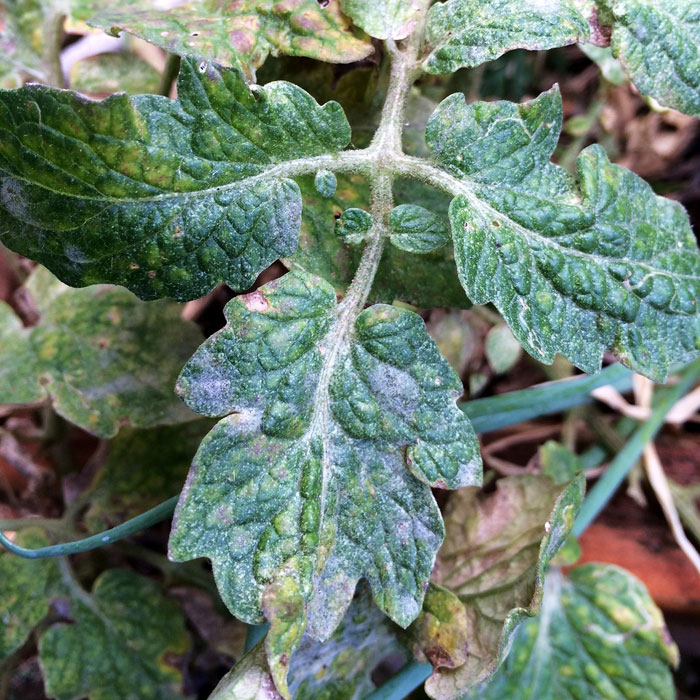
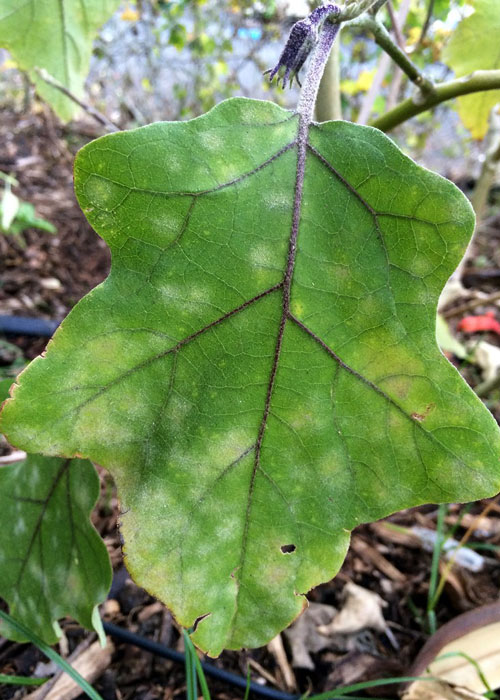
BEST PRACTICES FOR PREVENTION
As with any problem in the garden, the first step in management is providing the right conditions for your plants to thrive. Here are a few tips for supporting your plants’ natural defenses and limiting powdery mildew habitat in your garden:
- Choose varieties that are naturally resistant to the disease, such as ‘Diva’ cucumbers, ‘Blue Stocking’ bee balm, and ‘Zahara’ series zinnias. If you have certain plants that seem to cause problems year after year, consider removing them.
- Create good airflow by pruning shrubs and providing adequate space between annuals and vegetables.
- As always, follow the principle of “right plant, right place.” Sun-loving plants mistakenly placed in the shade are especially susceptible to powdery mildew.
- Prevent drought stress by watering deeply and consistently. Check out these tips for effective summer watering.
- Water in the morning rather than the evening. Powdery mildew loves to take hold in humid nighttime conditions.
- Feed your plants consistently with a slow-release fertilizer. Nutrient deficiencies can make plants more vulnerable to disease, while fast-acting synthetic fertilizers can encourage too much susceptible new growth all at once.
- Rotate your annuals and vegetables. Since different species of powdery mildew affect different plants, you can disrupt the fungus’s lifecycle by changing the locations of your plants from year to year.
- Always remove and discard infected material, especially as you clean up your garden before winter.
COMMERCIALLY AVAILABLE FUNGICIDES
There are several easy-to-use products that can help prevent powdery mildew available at Sky Nursery. Gardeners who prefer the DIY approach may also want to look into preventive home remedies.
Using sulfur-based fungicides is one effective method. Although sulfur is a natural control measure allowed in organic gardening, it can still be harmful to your garden if over-used, so be sure to carefully follow all label directions.
The bacteria-based organic fungicide Revitalize is also effective at preventing powdery mildew. When sprayed on plant leaves, the bacteria destroy fungal spores before they have a chance to take hold.
With either of these products, applying a liquid solution all over the leaves about once a week is likely to be the most effective method.
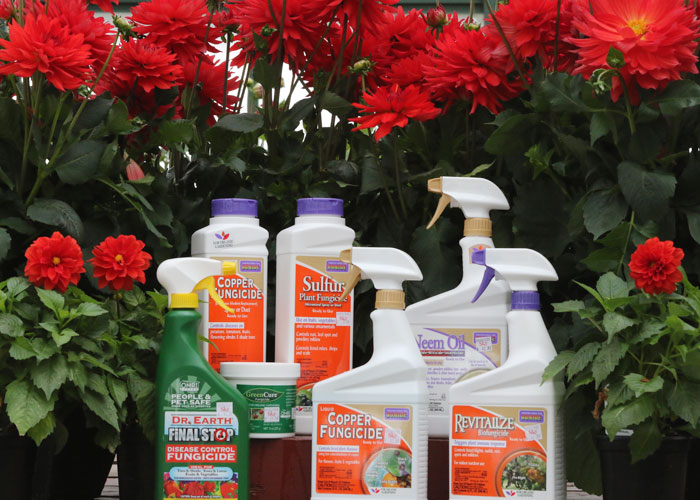
Have a plant disease problem? We're happy to help.
Summer is the season of garden abundance. It's also the time of year that all sorts of plant diseases tend to pop up. Sky Nursery staff can help identify disease problems and recommend solutions that fit your gardening style. Bring in some pictures, or better yet a leaf sample. We'll be happy to help you diagnose the problem and decide what to do. Then you can get back to enjoying your summer garden.
